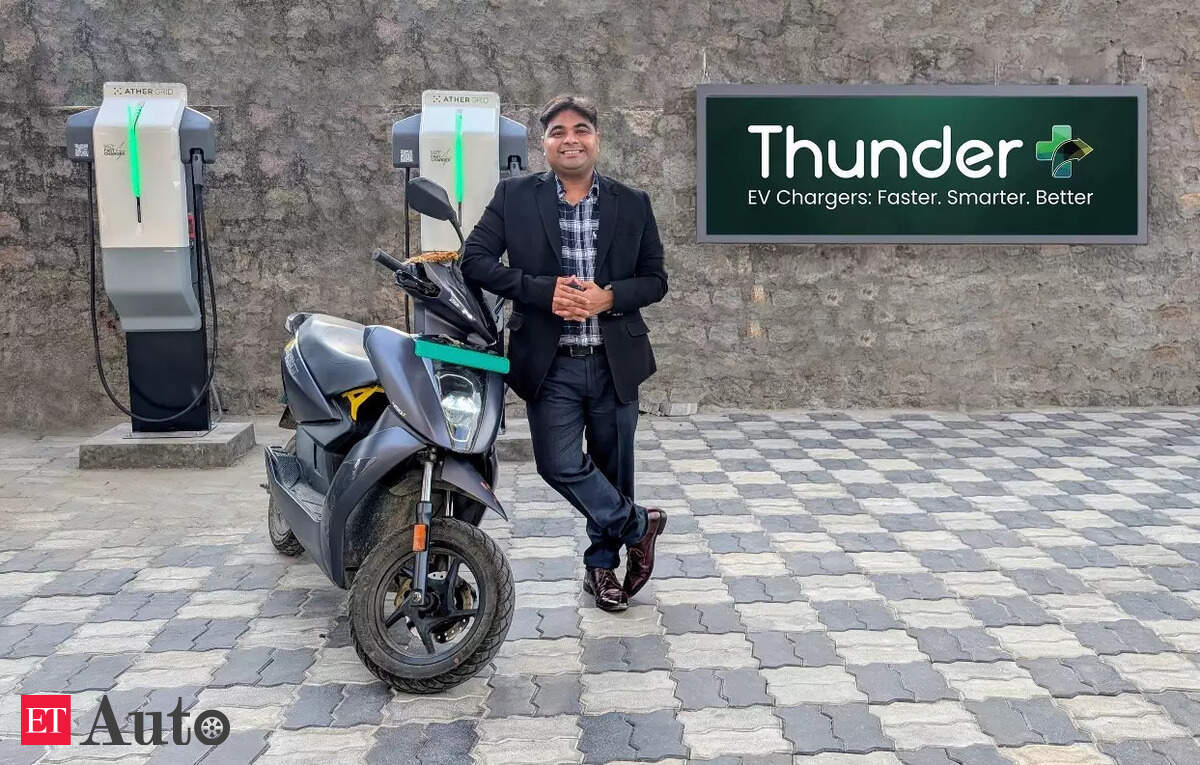Ola Electric Faces Share Plunge and Performance Setbacks

The Indian electric two-wheeler market witnessed contrasting financial performances from key players Ola Electric and Ather Energy in the fourth quarter of fiscal year 2025 (Q4 FY25). While Ather Energy reported significant improvements, Ola Electric faced substantial setbacks, including a sharp decline in revenue and escalating losses, signaling a challenging period for the erstwhile market leader.
Ola Electric experienced a difficult March quarter, with operating revenue plummeting by 61.8% year-on-year to Rs 611 crore, down from Rs 1,598 crore in the same period last year. The company's net loss more than doubled to Rs 870 crore, compared to Rs 416 crore in Q4 FY24. Founder Bhavish Aggarwal attributed these financial struggles primarily to a one-time issue with the vehicle registration process. This included a temporary backlog stemming from contract renegotiations with registration service providers Rosmerta and Shimnit India, which reportedly led to a discrepancy in February Vahan data showing only 8,652 registrations against the company's claim of 25,000 units sold. These registration issues have since been resolved. The poor quarterly performance also impacted Ola Electric's market standing, with reports indicating a slip to third place in India’s electric two-wheeler market in May, and its stock price fell 9.7% to an intraday low of Rs 48.07 following the earnings announcement, trading significantly below its IPO price of Rs 76.
In response to the Q4 results, Ola Electric's CEO Bhavish Aggarwal described the period as one of 'important learning and introspection.' He emphasized a renewed focus on cautious capital allocation for new products, strengthening internal processes, particularly in customer service, regulatory compliance, and risk management. Despite the setbacks, Ola Electric has guided for a stronger June quarter (Q1 FY26), forecasting revenue between Rs 800-850 crore, approximately 65,000 deliveries, and an improved gross margin of 28-30%. The company has also commenced deliveries of its Roadster X motorcycles, marking its entry into the electric motorcycle segment.
In stark contrast, Ather Energy demonstrated robust growth in Q4 FY25. The Bengaluru-based electric scooter manufacturer reported a 29% increase in operating revenue, which rose to Rs 676.1 crore from Rs 523.4 crore in the corresponding quarter of the previous year. Furthermore, Ather successfully narrowed its losses by 17% year-on-year to Rs 234.4 crore, driven by increasing sales volumes and improved margins.
During Q4 FY25, Ather Energy sold 47,411 electric scooters, a figure close to Ola Electric's 51,375 units. The company is actively working on developing its own line of electric motorcycles, with funding partially sourced from its IPO proceeds. Ather's cofounder, Tarun Mehta, expressed confidence in achieving profitability soon, highlighting the company's 'capital-light and more capital-efficient approach' which could allow profitability at a lower scale compared to some competitors.
Regarding operational expenses, Ola Electric managed to reduce its overall expenses by 31.6% to Rs 1,306 crore, largely due to a significant cut of nearly Rs 1,000 crore in material costs. Ather Energy, on the other hand, saw its expenses increase by 12.6% to Rs 922.2 crore, mainly attributed to higher material costs, although its employee benefit expenses saw a decline of 29% to Rs 109.1 crore.
Market analysts, such as brokerage Kotak Institutional Equities, have noted that the performance of Ola Electric's Roadster X will be crucial for the company, particularly in its efforts to penetrate the rural market, which constitutes a significant portion of the two-wheeler segment. The contrasting Q4 performances highlight the dynamic and competitive nature of India's rapidly evolving electric vehicle landscape.










